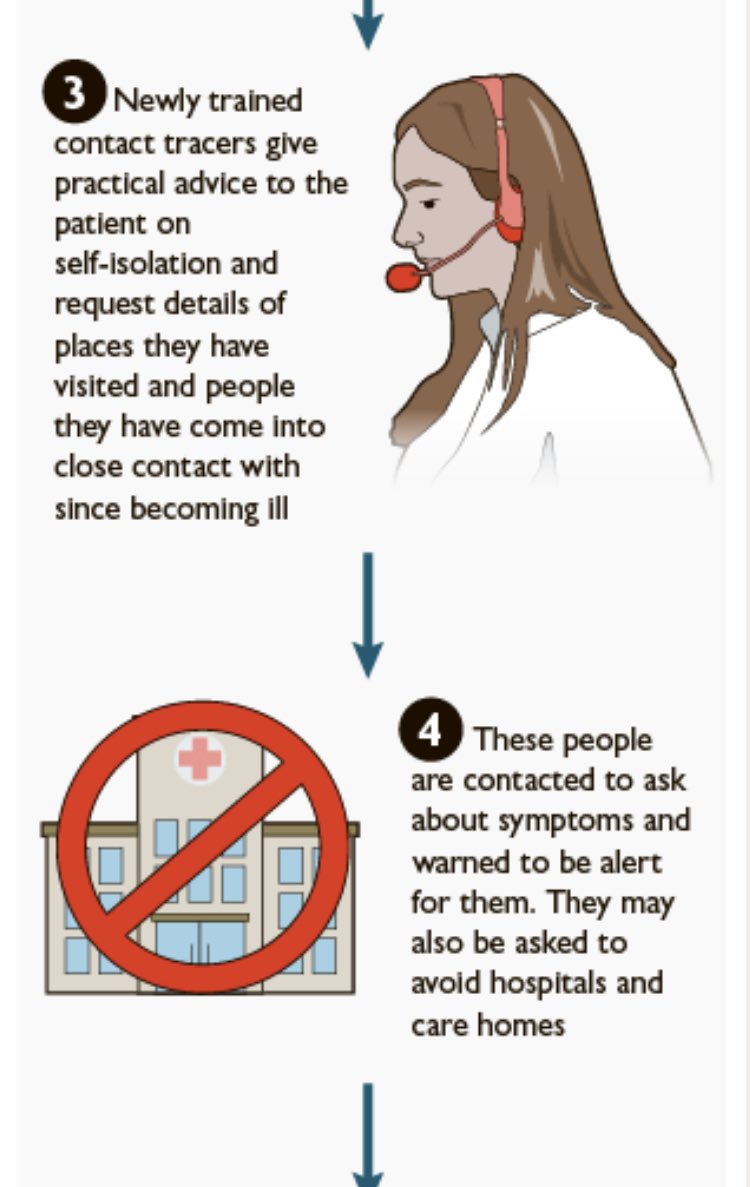Meticulous Germans in tracking/tracing #COVID19
In early March, Bernd Neff found himself climbing walls with boredom/frustration in Berlin.
Few days earlier, Berlin’s patient zero an intern who worked on same floor as Mr Neff in Berlin, had tested positive for coronavirus.
 https://abs.twimg.com/emoji/v2/... draggable="false" alt="👇" title="Down pointing backhand index" aria-label="Emoji: Down pointing backhand index">
https://abs.twimg.com/emoji/v2/... draggable="false" alt="👇" title="Down pointing backhand index" aria-label="Emoji: Down pointing backhand index">
In early March, Bernd Neff found himself climbing walls with boredom/frustration in Berlin.
Few days earlier, Berlin’s patient zero an intern who worked on same floor as Mr Neff in Berlin, had tested positive for coronavirus.
Mr Neff was barely aware of the young man’s existence. “I saw him walking past. Nothing more.”
At 7am on a Mon morning he received a warning text from his boss. Less than an hour later, he was ordered into quarantine by a doctor from the local health authority.
At 7am on a Mon morning he received a warning text from his boss. Less than an hour later, he was ordered into quarantine by a doctor from the local health authority.
Neff was told to order his 22 employees to stay at home.
It was in the first flush of Germany’s contact-tracing policy, under which every person who has come into contact with a coronavirus patient over the previous fortnight is theoretically tracked down and tested.
It was in the first flush of Germany’s contact-tracing policy, under which every person who has come into contact with a coronavirus patient over the previous fortnight is theoretically tracked down and tested.
Process begins with “category I” individuals, who either touched the patient or spent at least 15 mins in close enough proximity to be sneezed or coughed on.
This means lovers, friends/relatives, but extends to people who had sat within two rows of them on public transport.
This means lovers, friends/relatives, but extends to people who had sat within two rows of them on public transport.
The search then broadens to category II, those who have been in same room as the infected person.
This is how Mr Neff, whose offence had been to share an office with Berlin’s first CV patient, came to be cooped up 2 weeks with his family, on pain of a fine of up to €450,000.
This is how Mr Neff, whose offence had been to share an office with Berlin’s first CV patient, came to be cooped up 2 weeks with his family, on pain of a fine of up to €450,000.
Contact-tracing is believed to have been instrumental in suppressing first big wave of CV infections that hit Germany, spreading through series of carnivals.
The ground zero of the outbreak was a Lententide parade in Heinsberg, a largely rural community near the Dutch border.
The ground zero of the outbreak was a Lententide parade in Heinsberg, a largely rural community near the Dutch border.
Within days the outward ripple of investigations had reached a family from village 30 miles away, who had a relative in the danger area. They were asked to stay at home for 14 days. Officials rang them twice a day to check their symptoms and temperatures. https://www.thetimes.co.uk/article/germans-were-meticulous-in-tracking-those-who-had-made-contact-qv3glvkjd">https://www.thetimes.co.uk/article/g...

 Read on Twitter
Read on Twitter " title="Meticulous Germans in tracking/tracing #COVID19 In early March, Bernd Neff found himself climbing walls with boredom/frustration in Berlin.Few days earlier, Berlin’s patient zero an intern who worked on same floor as Mr Neff in Berlin, had tested positive for coronavirus. https://abs.twimg.com/emoji/v2/... draggable="false" alt="👇" title="Down pointing backhand index" aria-label="Emoji: Down pointing backhand index">">
" title="Meticulous Germans in tracking/tracing #COVID19 In early March, Bernd Neff found himself climbing walls with boredom/frustration in Berlin.Few days earlier, Berlin’s patient zero an intern who worked on same floor as Mr Neff in Berlin, had tested positive for coronavirus. https://abs.twimg.com/emoji/v2/... draggable="false" alt="👇" title="Down pointing backhand index" aria-label="Emoji: Down pointing backhand index">">
 " title="Meticulous Germans in tracking/tracing #COVID19 In early March, Bernd Neff found himself climbing walls with boredom/frustration in Berlin.Few days earlier, Berlin’s patient zero an intern who worked on same floor as Mr Neff in Berlin, had tested positive for coronavirus. https://abs.twimg.com/emoji/v2/... draggable="false" alt="👇" title="Down pointing backhand index" aria-label="Emoji: Down pointing backhand index">">
" title="Meticulous Germans in tracking/tracing #COVID19 In early March, Bernd Neff found himself climbing walls with boredom/frustration in Berlin.Few days earlier, Berlin’s patient zero an intern who worked on same floor as Mr Neff in Berlin, had tested positive for coronavirus. https://abs.twimg.com/emoji/v2/... draggable="false" alt="👇" title="Down pointing backhand index" aria-label="Emoji: Down pointing backhand index">">
 " title="Meticulous Germans in tracking/tracing #COVID19 In early March, Bernd Neff found himself climbing walls with boredom/frustration in Berlin.Few days earlier, Berlin’s patient zero an intern who worked on same floor as Mr Neff in Berlin, had tested positive for coronavirus. https://abs.twimg.com/emoji/v2/... draggable="false" alt="👇" title="Down pointing backhand index" aria-label="Emoji: Down pointing backhand index">">
" title="Meticulous Germans in tracking/tracing #COVID19 In early March, Bernd Neff found himself climbing walls with boredom/frustration in Berlin.Few days earlier, Berlin’s patient zero an intern who worked on same floor as Mr Neff in Berlin, had tested positive for coronavirus. https://abs.twimg.com/emoji/v2/... draggable="false" alt="👇" title="Down pointing backhand index" aria-label="Emoji: Down pointing backhand index">">


